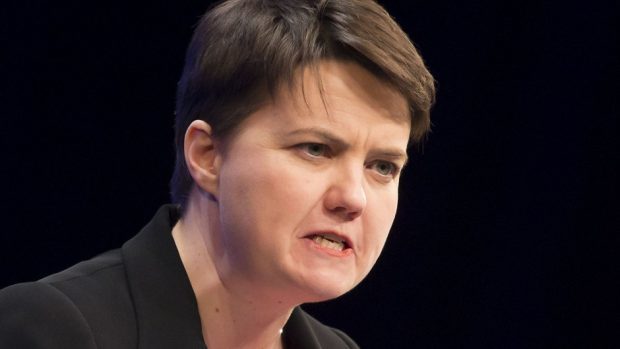Middle income families would be given a 10% tax cut under a system tabled by a Scottish Conservatives-backed commission.
A new 30% income tax rate for the so-called squeezed middle would “ensure fewer aspirational families are dragged into the “upper band”, the Independent Commission for Competitive and Fair Taxation in Scotland said.
The middle rate would kick in for households at the current lower threshold for higher rate taxpayers of £42,385, but the commission did not specify an upper limit.
The plan to free thousands of families across Scotland from paying the higher rate comes 100 days before the Holyrood election, with tax set to be a key battleground.
As well as relieving the tax burden on “aspirational families”, the new rate will encourage middle earners to spend to the benefit of the wider economy, the commission’s chairman Sir Iain McMillan said at the report’s launch yesterday.
The current income tax model includes a basic rate of 20% for incomes up to £42,385 and a higher rate at 40% for those earning above that and up to £150,000.
Other proposals from the commission include ending the council tax freeze and introducing rise caps, scrapping the tax on the purchase of homes known as Land and Buildings Transaction Tax and replacing the Air Passenger Duty with a system linked to distance travelled.
Business rates should be frozen for at least five years to offset the 42% rise in the tax since 2007, the report added. The panel also stated that Scotland’s overall tax burden should not be higher than in the UK.
Sir Iain, the former head of the Confederation of British Industry Scotland, refuted suggestions the proposals were weighted in favour of the well-off and said their proposals will create a “trickle down effect” from increased economic growth and larger tax revenues.
SNP MSP Kenneth Gibson said the proposals are a series of “un-costed set of tax cuts which largely benefit those on higher incomes and the biggest businesses”.
Scottish Conservatives leader Ruth Davidson said they will do everything they can to stop the SNP using new powers that takes money from the “paypackets of hardworking Scots”.
Jackie Baillie, Scottish Labour’s finance spokeswoman, said the proposals smacked of Tory policy in the 1980s, adding her party would instead raise taxes for those earning more than £150,000 “so we can invest in future generations”.
Willie Rennie, leader of the Scottish Liberal Democrats, said the Tories “still favour tax cuts for the better off no matter what the consequences”.
He added: “Much of the rest of the report is a rebuke to current Scottish Conservative policy. The report calls for a fair reform of Council Tax even though Scottish Conservatives boycotted the cross-party commission on local tax reform.
“Scottish Conservative councillors in Moray are voting to put council tax up by 18% which will hit people’s pockets hard there.
“And the report is silent on the plans by George Osborne to increase council tax by 8% for his councils. That means the Tories have the green light to match those tax rises here.”
